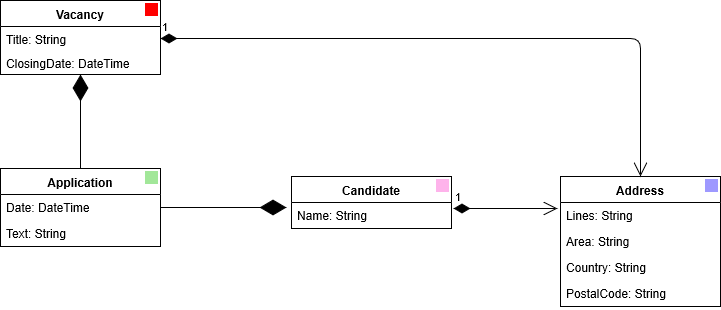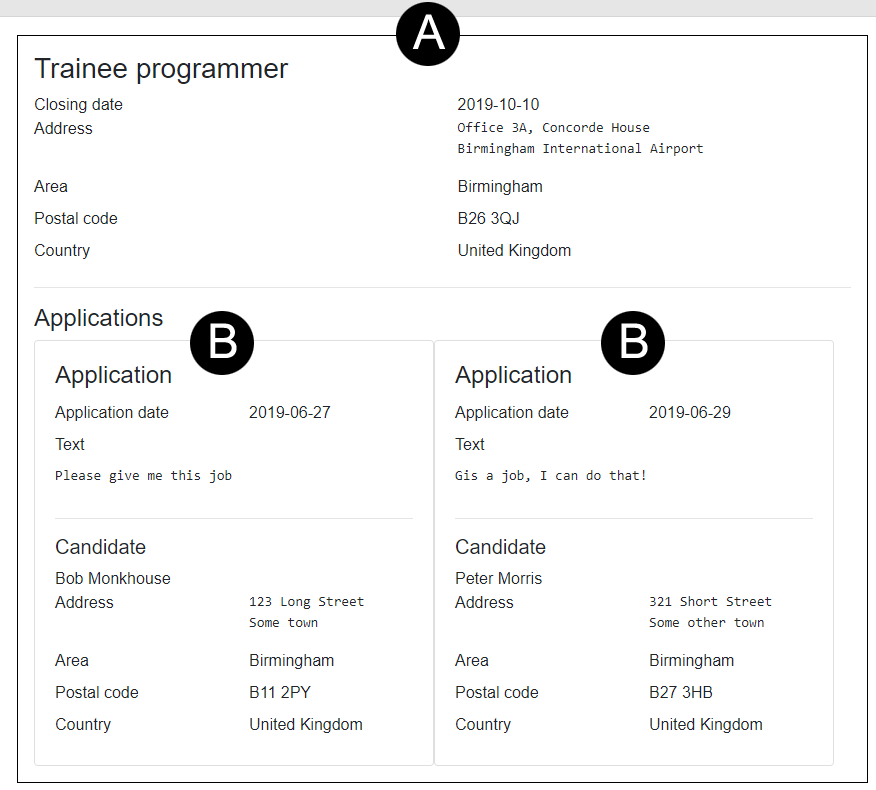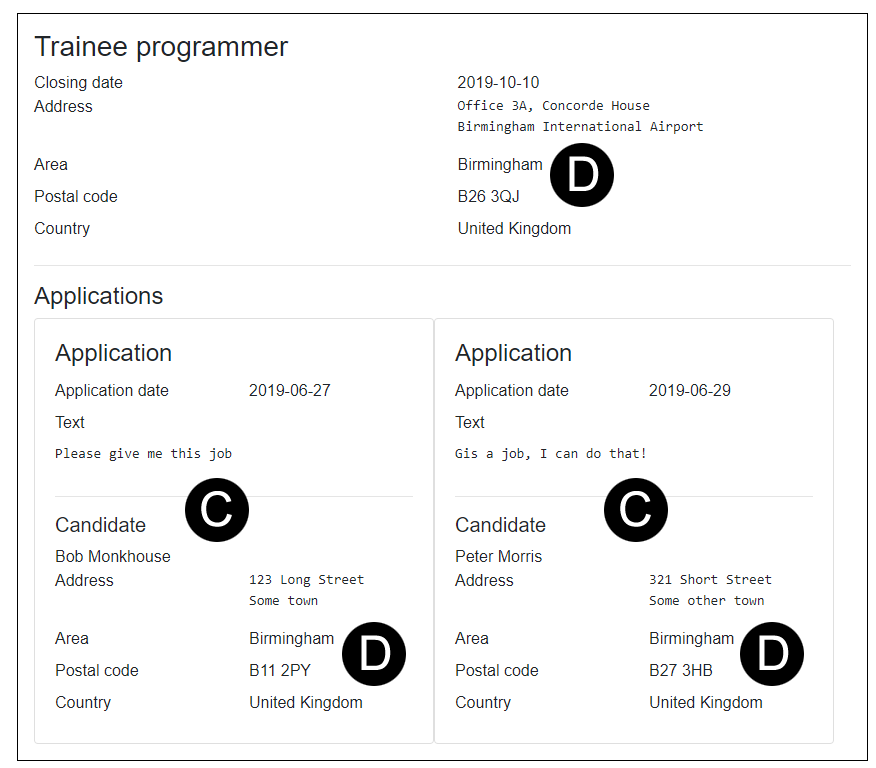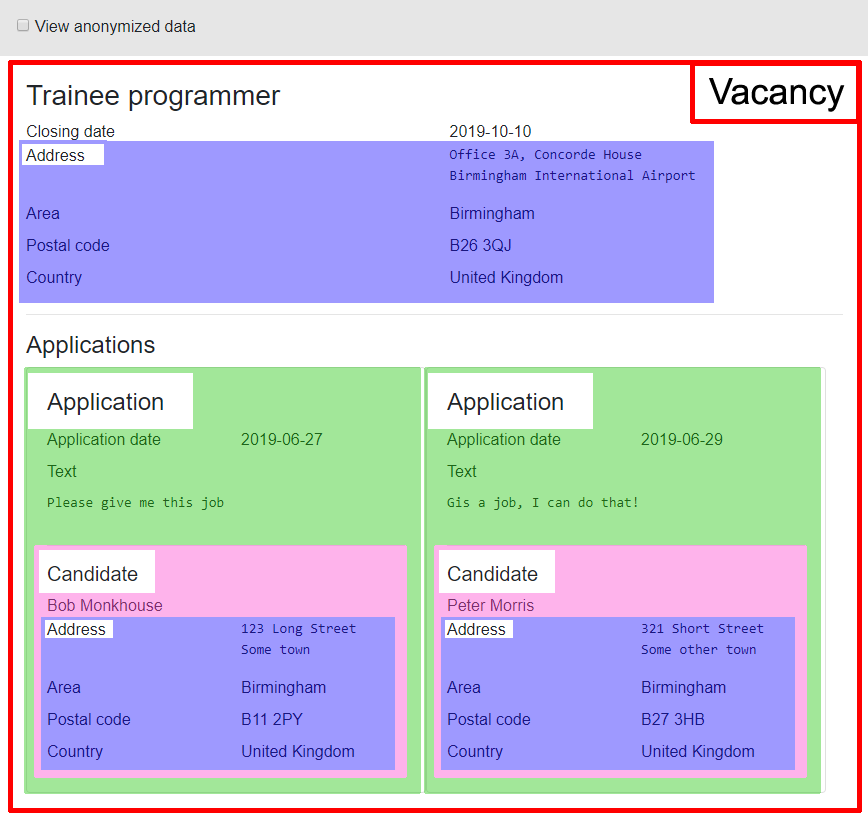We've already seen how Blazor allows us to pass context from a parent component to a child using Parameters. As a component becomes more complex it is not uncommon to split it up into sub-components. At some point it is likely a component will require its consumer to pass state that it doesn't use itself, but is needed by one of its sub-components. As our components' structures become more complex with time, we might find ourselves with components that require multiple parameters added to them that they don't consume, but simply pass on because they are required somewhere deeper down.

Take a job recruitment application as an example. A Vacancy can have many Applications;
each Application is for a single Vacancy and belongs to a single Candidate;
both Vacancy and Candidate have an Address.

Viewing the vacancy shows all applications.
At some point a requirement is identified to allow the user to click on a single application and view it in detail on its
own page, so a new ViewApplication.razor component is created that will be used when viewing a vacancy or when viewing
a single application.

Now we have a ViewVacancy.razor component (labelled A) which loops through all applications against the vacancy and
for each it renders a ViewApplication.razor component (labelled B).
As an exercise in standardizing the application, it is decided candidates should be displayed using a ViewCandidate.razor
component (labelled C), and all addresses should be displayed using a ViewAddress.razor component (labelled D).

In the interests of equal opportunities, the page that displays applications for a vacancy needs the option of viewing
applications without revealing the name or full address of the candidate,
so a checkbox is added to the page "View anonymized data".
In fact, this feature is seen as so critical to the application,
the checkbox is added to the MainLayout.razor page so it is available everywhere throughout the system.

The ViewVacancy.razor component has no sensitive data so it doesn't need to know if the user is viewing anonymized data.
The ViewApplication.razor component within it also has no sensitive information, so it doesn't need to know either;
but the ViewCandidate.razor component needs to anonymize the candidate's name,
and the ViewAddress.razor component within the ViewCandidate.razor component needs to anonymize data too.

Because ViewAddress.razor and ViewCandidate.razor require a Boolean parameter identifying whether or not they should
display sensitive information, some components must therefore also require the same parameter just to pass it on to any
components it hosts either directly or indirectly.

Illustration of a parameter being required solely to pass data on to children
This is the challenge that Cascading values solve.

